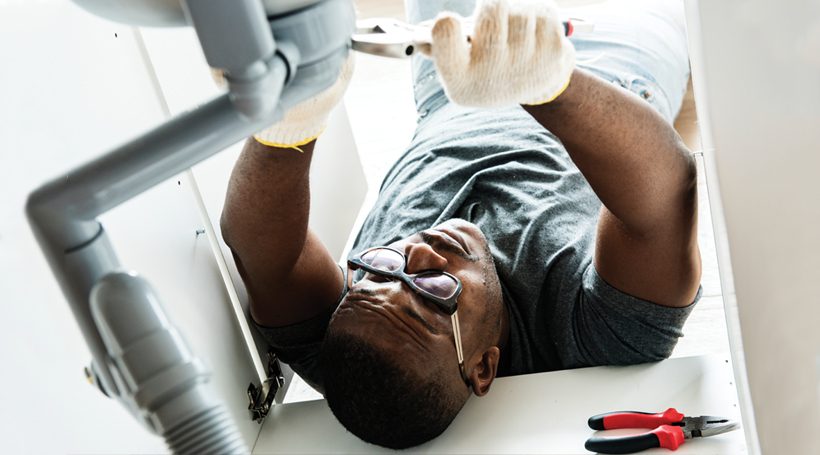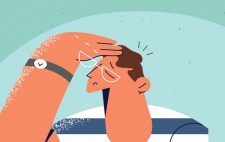No pain, no gain, right? When you’re working out, you’ve got to push through, keep going, be tough. That is, if you want to get hurt.
While it’s normal to wake up in the morning after an intense workout with some sore and aching muscles, there’s a fine line between pain that makes you stronger and pain that will take you out for months – especially if you’re not an athlete.

Merrick Wetzler, MD
“We call them ‘sports injuries’ when we really should be saying ‘activities injuries,’” says Merrick Wetzler, MD, an orthopedic surgeon at Advocare South Jersey Orthopedic Associates. “You can get an injury doing anything – jogging, running, gardening, walking the dog, going to the beach, cleaning the house.”
By that, he means that pretty much anything that requires you to move in ways you normally wouldn’t – or that causes you to use the same muscles over and over again – can cause injury. The most common issues doctors see in non-athletes are sprains and overuse injuries, especially in the knees and shoulders. Even something as simple as taking your daily walk on the beach instead of the sidewalk in the summer, he says, can cause stress in your body.
That’s not to scare you – there isn’t an injury lurking behind every accidental stumble or yoga class, says Wetzler. But it is to say that it’s important to stay in tune with how your body feels and know when it’s time to back off or take a break.
“Soreness here and there after a good workout is great – during exercise, your muscles break down, and the soreness means there is a stronger blood flow in that area helping to repair them even stronger than they were,” says Wetzler. “But when it starts to linger – when it interferes with your everyday life, like when doing something as simple as lifting your arm to put a plate back in the cupboard becomes too painful, then it’s time to take a step back.”
Sometimes, all your muscles need are rest, ice, compression and elevation. But when the pain sticks around for longer than a few days or turns into a sharp pain in a specific part of the body, that’s when it’s time to see a specialist. “Anything obvious – swelling, bruising, popping sounds, change in gait – that’s something to be worried about,” says Wetzler.
Tennis elbow, for example, is an equal-opportunity injury – affecting people regardless of whether they’ve picked up a racket before. When you repeat the same arm motion, the tendons on your muscles start to fray, which leads to pain and inflammation. Yes this affects tennis players, but it can also show up in professions like painters, plumbers and cooks.
Other times, people aren’t taking care of their muscles as well as they should. For many, well-known advice like stretching goes right out the window.
“It’s almost like we’ve heard it so many times, the advice has become so commonplace that people forget its importance altogether,” says Wexler. “So people will jump into activities without proper warmups, which predisposes your body to injury.”

David Gealt, DO
This especially applies to the “weekend warriors” – people who stay sedentary all week, only to go full force on the weekends. This often results in a sprained ankle after a jog or a tear in a meniscus sliding into first base during their weekend softball game, says David Gealt, DO, assistant director of sports medicine and director of the sports concussion program at Cooper University Health Care Bone and Joint Institute.
“People can be stubborn,” he adds, “so when they haven’t worked out for a long time and they jump back into it, or when they’re getting older and can’t do the activities they’ve always done at the same capacity, sometimes they ignore the aches and pains, because they believe they just have to push through.”
And that, he says, is not a smart move. Especially in the last few months as pandemic restrictions have lifted and gyms have reopened, many people tried to jump back into their pre-pandemic workout routines.
“The pandemic put so many parts of our lives on hold, so when the restrictions were lifted and we went back to our favorite restaurants or activities, we wanted to pick up right where we left off,” says Gealt. “But exercise is not like that. People were sedentary for so long, and your body needs time to warm back up.”
Which can sometimes be hard on your ego.
“If you were running 10 miles before the pandemic and all of a sudden you can only run 1, it’s easy to say you just have to push through,” he says. “Instead, people should treat getting back into exercise like a preseason – give yourself 4 to 6 weeks to ramp back up, increasing your activity every few days by no more than 10 percent.”
If you go too quickly too soon, he says, that’s when it’ll start to hurt. And if it does, don’t ignore it.
“Bottom line,” says Gealt, “don’t push through the pain. Pay attention to your body and get yourself checked out when issues come up. If something is wrong, the problem can become much, much bigger if you ignore it.”














